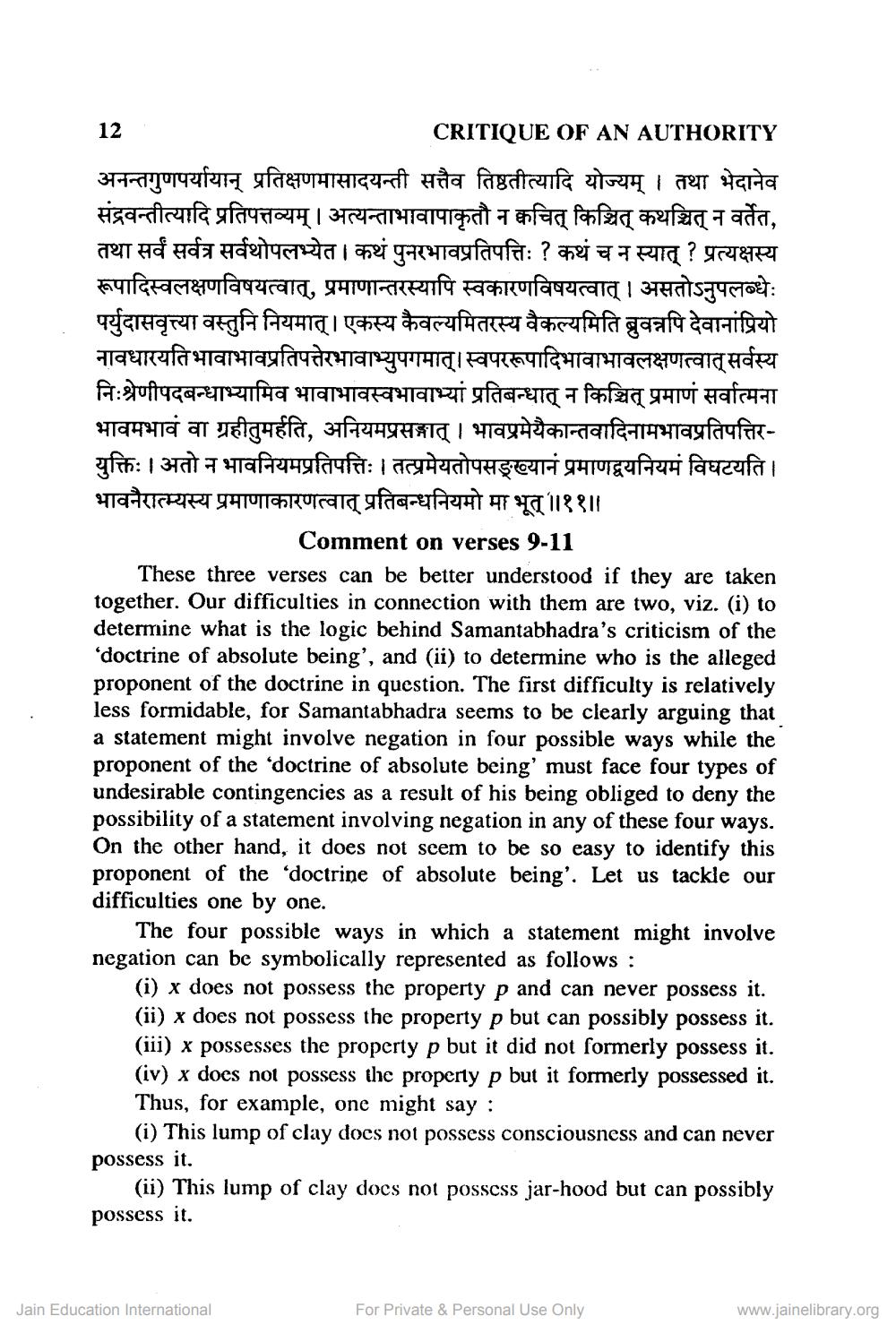________________
12
CRITIQUE OF AN AUTHORITY अनन्तगुणपर्यायान् प्रतिक्षणमासादयन्ती सत्तैव तिष्ठतीत्यादि योज्यम् । तथा भेदानेव संद्रवन्तीत्यादि प्रतिपत्तव्यम् । अत्यन्ताभावापाकृतौ न क्वचित् किञ्चित् कथञ्चित् न वर्तेत, तथा सर्वं सर्वत्र सर्वथोपलभ्येत । कथं पुनरभावप्रतिपत्तिः ? कथं च न स्यात् ? प्रत्यक्षस्य रूपादिस्वलक्षणविषयत्वात्, प्रमाणान्तरस्यापि स्वकारणविषयत्वात् । असतोऽनुपलब्धेः पर्युदासवृत्त्या वस्तुनि नियमात् । एकस्य कैवल्यमितरस्य वैकल्यमिति ब्रुवनपि देवानांप्रियो नावधारयतिभावाभावप्रतिपत्तेरभावाभ्युपगमात्।स्वपररूपादिभावाभावलक्षणत्वात्सर्वस्य निःश्रेणीपदबन्धाभ्यामिव भावाभावस्वभावाभ्यां प्रतिबन्धात् न किञ्चित् प्रमाणं सर्वात्मना भावमभावं वा ग्रहीतुमर्हति, अनियमप्रसङ्गात् । भावप्रमेयैकान्तवादिनामभावप्रतिपत्तिरयुक्तिः । अतो न भावनियमप्रतिपत्तिः। तत्प्रमेयतोपसङ्ख्यानं प्रमाणद्वयनियमं विघटयति। भावनैरात्म्यस्य प्रमाणाकारणत्वात् प्रतिबन्धनियमो मा भूत् ॥११॥
Comment on verses 9-11 These three verses can be better understood if they are taken together. Our difficulties in connection with them are two, viz. (i) to determine what is the logic behind Samantabhadra's criticism of the 'doctrine of absolute being', and (ii) to determine who is the alleged proponent of the doctrine in question. The first difficulty is relatively less formidable, for Samantabhadra seems to be clearly arguing that a statement might involve negation in four possible ways while the proponent of the 'doctrine of absolute being' must face four types of undesirable contingencies as a result of his being obliged to deny the possibility of a statement involving negation in any of these four ways. On the other hand, it does not seem to be so easy to identify this proponent of the doctrine of absolute being'. Let us tackle our difficulties one by one.
The four possible ways in which a statement might involve negation can be symbolically represented as follows:
(i) x does not possess the property p and can never possess it. (ii) x does not possess the property p but can possibly possess it. (iii) x possesses the property p but it did not formerly possess it. (iv) x does not possess the property p but it formerly possessed it. Thus, for example, one might say :
(i) This lump of clay does not possess consciousness and can never possess it.
(ii) This lump of clay does not possess jar-hood but can possibly possess it.
Jain Education International
For Private & Personal Use Only
www.jainelibrary.org




